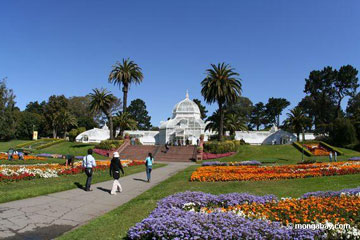Urban parks can offset warming effects of climate change says study
Urban parks can offset warming effects of climate change says study
mongabay.com
May 14, 2007
Increasing the number of urban parks and street trees in a city could offset the local heat effects of global warming, reports a new study by researchers at the University of Manchester.
Using Geographic Information System (GIS) mapping for Greater Manchester, the modelers calculated that a 10% increase in the amount of green space in city centers would reduce urban surface temperatures by up to 4 degrees C. The 4 degrees C drop, resulting from increased transpiration of water vapor by vegetation, would offset the predicted rise in temperature for Manchester until the 2080s.
“Green space collects and retains water much better than the built environment,” explained Dr Roland Ennos, a professor of biomechanics at Manchester’s Faculty of Life Sciences and a lead researcher in the team. “As this water evaporates from the leaves of plants and trees it cools the surrounding air in a similar way to the cooling effect of perspiration as it evaporates from our skin.”

|
“Urban areas can be up to 12°C warmer than more rural surroundings due to the heat given off by buildings, roads and traffic, as well as reduced evaporative cooling, in what is commonly referred to as an urban heat island’,” he added.
Ennos said that models forecast drier summers and wetter winters for Manchester, suggesting increased risk of droughts and floods. He noted that while increased green space would not be enough to counteract these changes.
“Warmer, drier summer months will reduce the amount of water available to plants and, during the longer droughts, this will reduce transpiration with its associated cooling effect,” he explained. “In order for the cooling effect of green spaces to work when it is most needed, cities would need to develop ways to store additional water, which could then be used to irrigate the green spaces during drier months.”
The research, published in Built Environment, seems to counter work published in Geophysical Research Letters and Proceedings of the National Academy of Sciences that suggest tree planting in northern latitudes can actually increase warming by absorbing greater amounts of sunlight without losing much moisture.
This is a modified news release from the Woods Hole Research Center